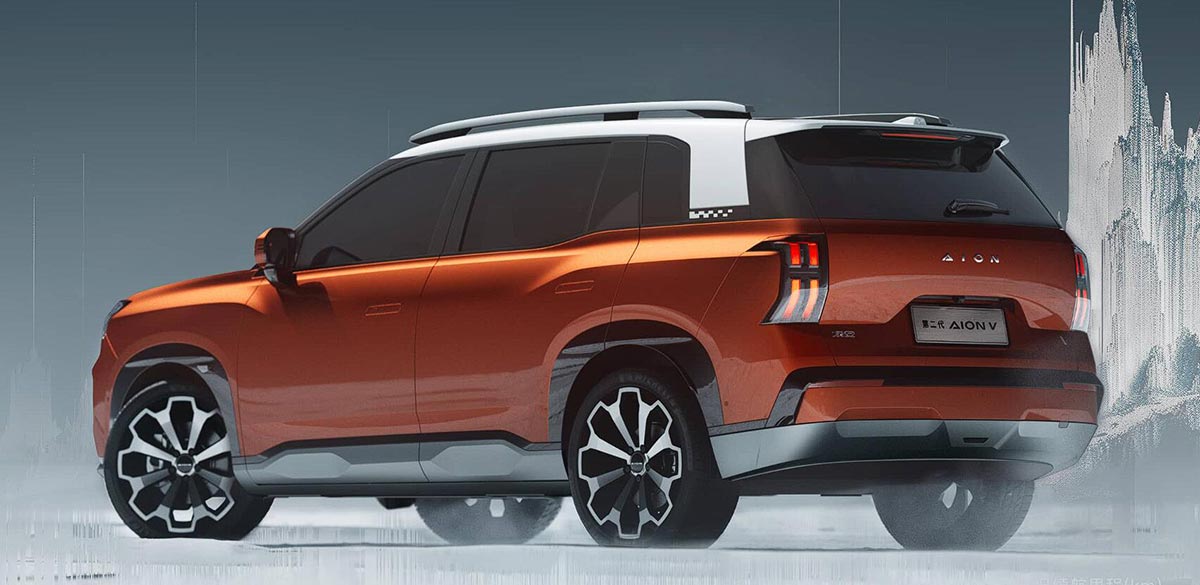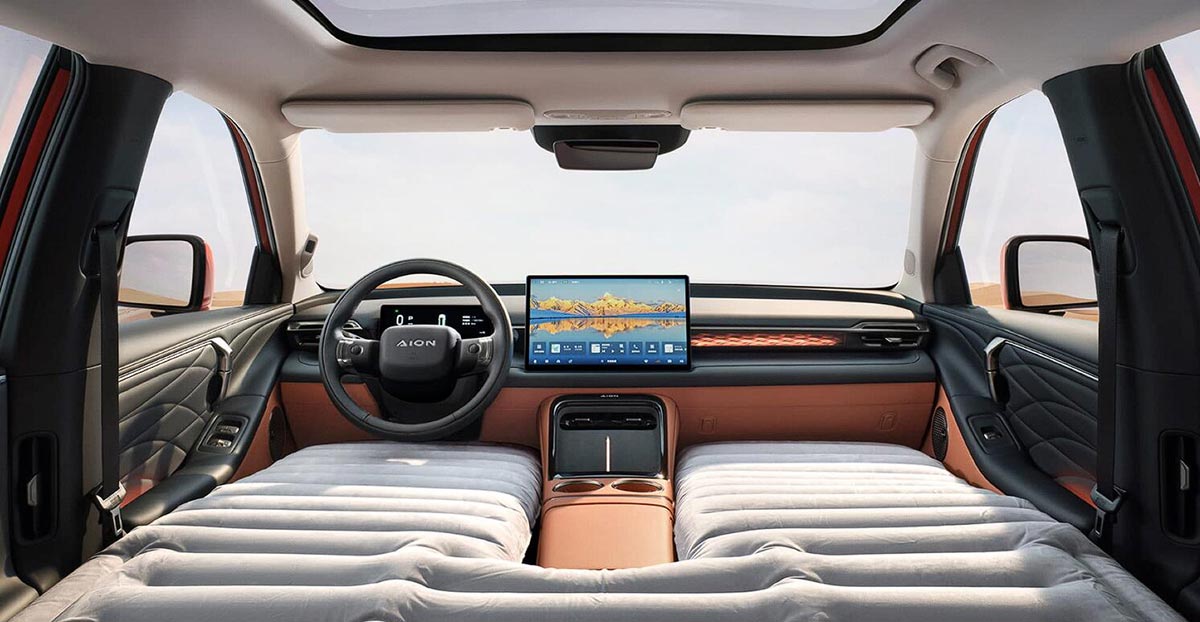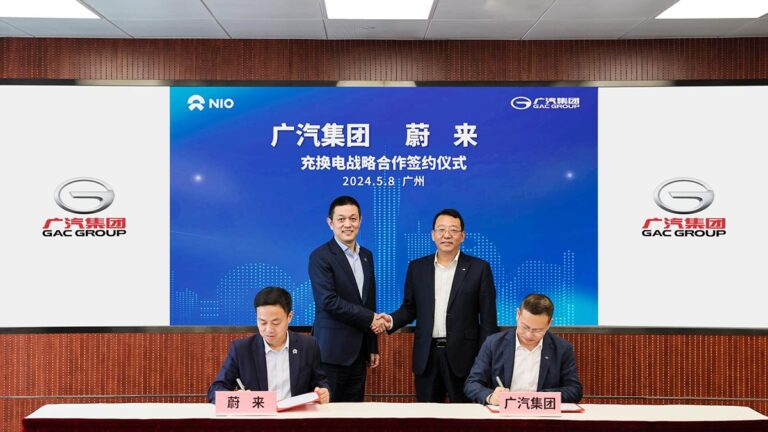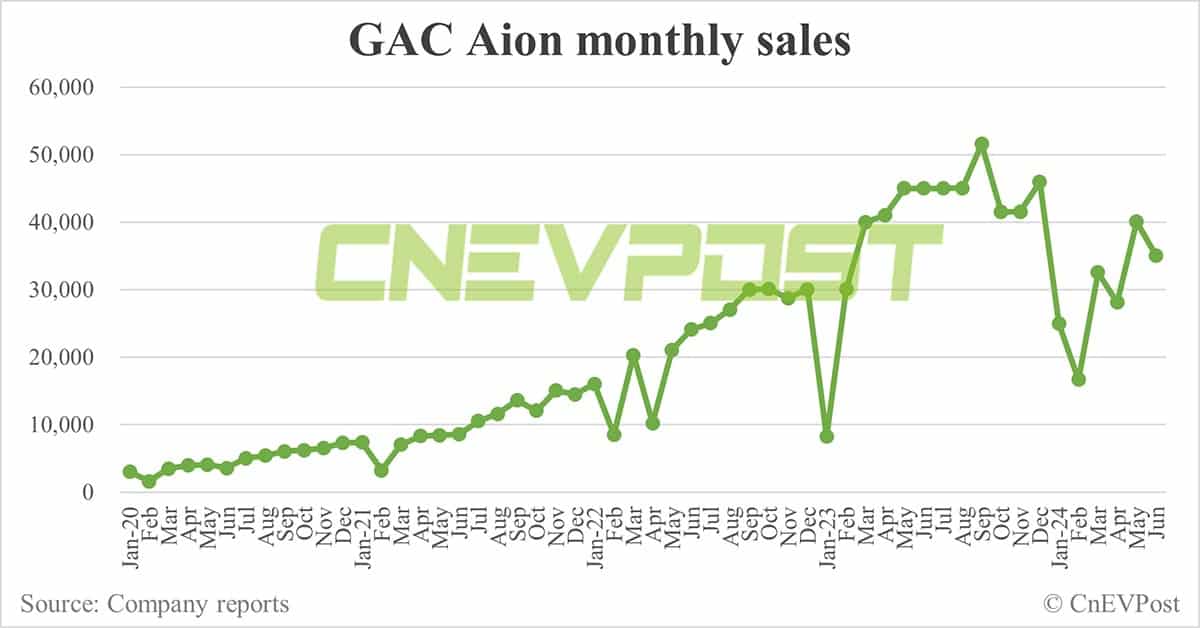The updated Aion V is GAC Aion's first model to be built in both its China and Thailand factories, and GAC Aion said the model will be available in a battery swap-enabled variant in the future.
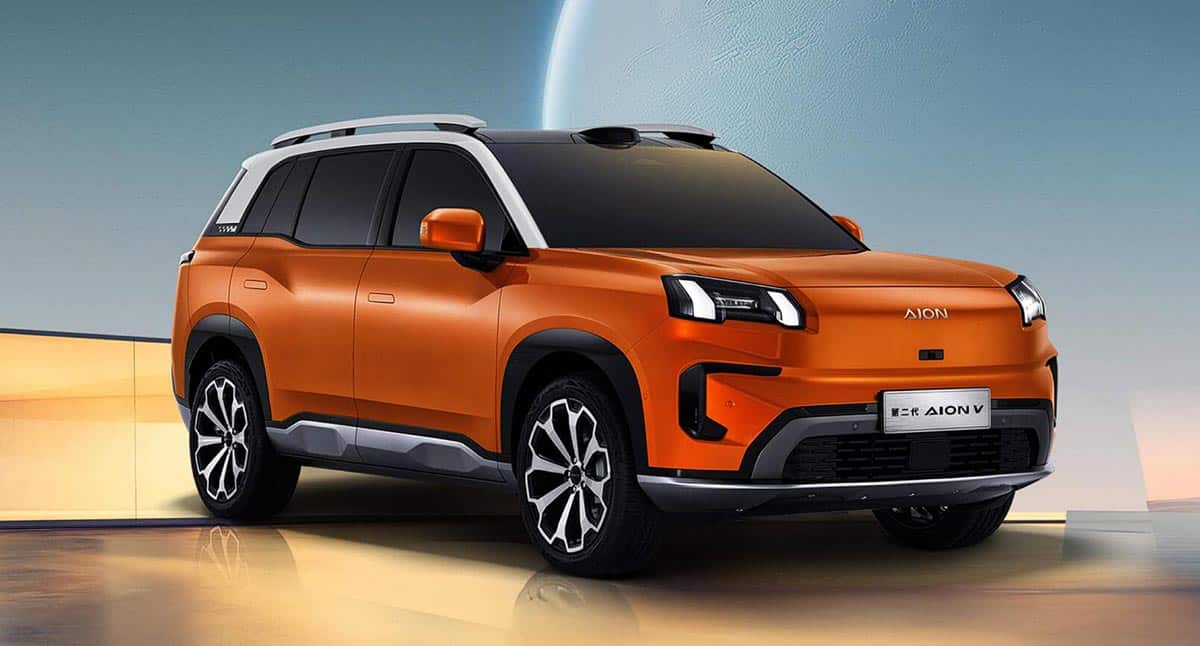
GAC Aion, the electric vehicle (EV) subsidiary of GAC Group, has rolled out the updated Aion V SUV (sport utility vehicle), its first model to be built in both its Chinese and Thai factories.
GAC Aion officially launched the second-generation Aion V in China at a launch event yesterday, offering seven versions with a starting price range of RMB 129,800 ($17,840) to RMB 189,800.
The model is a mid-size SUV based on GAC Aion's AEP all-electric platform, with length, width and height of 4,605 mm, 1,854 mm and 1,660 mm respectively, and a wheelbase of 2,775 mm.
According to GAC Aion, the model is designed to appeal to global consumer tastes, meet global quality standards, and adapt to global road conditions and regulations.
GAC Aion's plant in Thailand opened on July 17, its first overseas plant, and saw the second-generation Aion V roll off the assembly line on the same day.
The second-generation Aion V is GAC Aion's first global strategic model, and the Thai plant will import new models each year for local production, the company said at the time.
In China, the second-generation Aion V's starting price range is lower than its predecessor's RMB 149,900 to RMB 229,600.
The new Aion V has lower prices and aims to gain a larger market share and become one of the top sellers in the all-electric A-segment SUV market with a price range of RMB 130,000 to RMB 190,000, said GAC Aion deputy general manager Xiao Yong.
The second-generation Aion V offers two motor options, with the motors producing 150 kW and 165 kW of maximum power and 240 Nm of maximum torque for both.
All its variants are single-motor front-wheel drive models and all take 7.9 seconds to accelerate from 0 to 100 kilometers per hour, albeit with different motors.
The model has three battery pack capacities of 62 kWh, 75 kWh, and 90 kWh, with a range of 520 km, 650 km, and 750 km respectively.
GAC Aion claimed that the second-generation Aion V will be able to get as fast as 125 kilometers of range on a 5-minute charge and 370 kilometers of range on a 15-minute charge.
The second-generation Aion V will have a battery swap-enabled variant that will be launched at a later date, GAC Aion said, without mentioning a specific timeline or further details.
GAC Aion is one of the players in the battery swap space but has not invested massively in it.
It built its first battery swap station in April 2022 and announced in August 2023 that it had reached 14 stations. It is not clear how many battery swap stations it currently has.
In July 2023, GAC Aion's sub-brand Hyper launched the Hyper GT sedan, one variant of which supports battery swap.
On May 8 of this year, Nio (NYSE: NIO) and GAC Group signed an agreement on charging and battery swap, saying they would jointly develop battery-swap-enabled passenger cars and battery-swap stations compatible with models from both brands.
As of now, there are no further details on the two's collaboration in the battery swap space.
The second-generation Aion V received more than 10,000 firm orders within one hour and 20 minutes of its launch, GAC Aion said late last night.
GAC Aion sold 35,027 vehicles in June, down 22.18 percent year-on-year and down 12.59 percent from May, according to data compiled by CnEVPost.
In the first half of the year, GAC Aion sold 177,366 vehicles, down 15.27 percent year-on-year.
($1 = RMB 7.2749)

